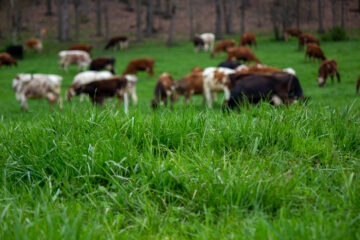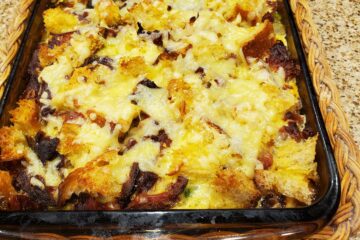It’s been a long cold winter at our farm and the cold weather seems to still want to stay. March is the busiest month of the year for us when we are dealing with many new baby calves, but this year it started out fairly slow. Our first calf wasn’t born until March 8th, and others followed in ones or twos each day. We have seventy-some cows due to calve between March and June. As of March 31, we have thirty-five calves. For our first heifer calf (in the picture above), we tried something new and asked for name suggestions on our Facebook page. We received over twenty ideas and finally landed on Latte.

One of the feeders we use to feed ten calves at once
Once a cow has a baby, we place the calf in a warm pen with several other calves around its age. On these cold March days, we try to get the new calf in a dry warm pen to prevent the calf’s undeveloped immune system from catching diseases from the older cows. Soon after a calf is born, we immediately feed it a bottle of colostrum (nutrient-laden milk from its mother) to boost the new calf’s immune system. In the group pens, we use special feeders that allow us to feed ten calves at once. We milk our cows twice a day, morning and afternoon, during the spring months and feed the calves milk from their mothers after each milking.

Texas, a Dutch Belted calf
If you have seen pictures of our herd, you may notice our cows are more colorful than most other farm’s cows. We enjoy having many different breeds of cows on our farm. This year, we have the first Dutch Belted calves, which are named for the big white belt that circles their bellies, as well as the red and red roan Milking Shorthorns, brown and tan Jerseys, and red-and-white Norwegian Red and Normande calves.
Currently, we are feeding the cows hay and allowing them to graze any grass that is slowly starting to grow. On a day when we were expecting a warm afternoon, Jesse frost-seeded several of our pastures with yellow clover seed. Clovers are legumes that work with symbiotic bacteria in their root system to take nitrogen from the air and make it available in the soil for other grasses to grow.

Jesse frost-seeding some yellow clover seed
The best way to frost-seed is to sow seed on a cold morning, allowing the natural honeycombing of the soil due to the freezing and thawing to work the seeds into the ground. We have used this process for several years and are continuing that tradition.
We also started on some upgrades for our creamery this month to allow us to make more cheese this summer, but that’s a newsletter for next month. April will be even busier as we wait for the rest of our cows to calve and start making cheese for the year.



0 Comments